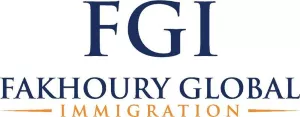For many years, U.S.-based enterprises have suffered a shortage of high skilled workers in the STEM (science, technology, engineering, mathematics) fields. As the U.S. Chamber of Commerce affirmed in an article from last year: "the number of jobs requiring substantial STEM expertise has grown nearly 34% over the past decade."1 At the same time, there is a significant pool of STEM talent that the U.S. is at risk of losing due to limitations placed on them for obtaining employment after graduation. The Institute of International Education's annual census of international students in the U.S. for the 2022-23 academic year showed that the U.S. hosted over one million students from over 210 countries around the globe. Approximately 40% of these students were enrolled in master's, doctorate, or professional degree programs in the U.S. Further, the majority of international students studied in STEM fields.2
Since 1992, one talent retention option has been Optional Practical Training (OPT) which allows students in F-1 status to work for one year on a student visa toward getting practical training to complement their education. Beginning in 2016, students studying or graduating in a STEM field have been eligible for a twenty-four-month extension, giving them a total of three years of OPT. While the STEM OPT program has played an important role in retaining STEM talent, it is time-bound. For longer-term residency beyond the OPT, international students often pursue an employer-sponsored H-1B visa that would allow continued employment beyond the OPT.3 Obtaining an H-1B, however, is very competitive. Every year there is a limited number of H-1B slots available to new applicants. There are only 65,000 general slots available and an additional 20,000 for applicants who have obtained a master's degree or Ph.D. from qualified U.S. institutions of higher education. For the FY 2024 H-1B lottery, USCIS received approximately 780,884 registrations for the 85,000 new slots. This was an increase of almost 500,000 applicants from the FY 2021 registration cycle and approximately 284,573 from the prior year. Facing these odds, many STEM students are forced to leave the United States when their F-1 expires at the end of their OPT period.
One way that universities can help ease their graduates' transition into employment, and to retain their skills in the United States, is to implement programs for them to work for universities or other H-1B cap-exempt organizations after graduation. At the same time, colleges and university can provide support for their graduates' efforts to establish and develop their own U.S.-based businesses as immigrant entrepreneurs. The H-1B cap exemption allows universities, government agencies, and non-profits to employ H-1B workers outside of the statutory limitations noted above. This benefits universities as it allows them to utilize the talent of the international students to further their educational mission. The positions that these individuals hold varies based on what they studied. But for students in STEM fields, it could include things like conducting further research in the emerging technologies they studied. For students in business fields, it could include things like working for a small business clinic that provides local small businesses with resources that further their work in the community. Of course, it also can include providing educational instruction to students or professional development programs.
Several universities and colleges have created Global Entrepreneur in Residence (Global EIR) programs to provide entrepreneurship mentoring to their students and area startup companies.4 Global EIR programs allow foreign graduates to remain in the U.S. to work for the college or university to further their areas of study. This helps the U.S. to retain the foreign talent, who have studied in the U.S. For example, one such Global EIR was created in 2014 by the Massachusetts State Legislature for students working part-time at the University of Massachusetts Boston, while providing them the opportunity to work to develop their U.S.-headquartered start-up.5 In addition, organizations that support immigrant inclusion, but are not academic institutions per se, can assist immigrants entrepreneurs with a completed degree by matching them with a university Global EIR program to obtain qualifying employment and to serve as a mentor to that university's students.
One such Global EIR assistance program has been created by the immigrant inclusion organization, Global Detroit, who has partnered with academic institutions such as the University of Michigan, Wayne State University, the Center for Creative Studies (CCS), Lawrence Technological University and Michigan Technological University to provide Global EIR opportunities for high-skilled foreign nationals who seek to launch or grow their startup business in Michigan.6 Since the founding of Global Detroit's Global EIR program in 2019, it has had remarkable success. By the end of its pilot period (2022), the program employed eight founders representing seven tech start-ups according to an independent assessment prepared by the Growth Capital Network.7 The report goes on to say that the current and alumni startups "have produced more than $500,000 in annual recurring revenue, raised $15.6 M+ of funding from investors inside Michigan and across the region, and hired 49 FT and PT staff, working in Michigan and remotely."8
By creating Global Entrepreneur in Residence (EIR) programs, therefore, colleges and universities, and immigrant inclusion organizations, can help to retain global talent in the U.S. and help to ensure the U.S. remains at the forefront of emerging trends in the STEM fields. In addition to bettering their respective graduates, universities would benefit the U.S. as a whole by ensuring U.S. trained global talent remains in the U.S. working to benefit U.S. needs.
Footnotes
1. "Addressing the STEM Workforce Shortage," U.S. Chamber of Commerce Foundation, October 17, 2022: https://www.uschamberfoundation.org/education/addressing-stem-workforce-shortage
2. https://opendoorsdata.org/annual-release/international-students/#fast-facts
3. There are a number of limited legal options in addition to the H-1B that depend on the particular experience, skills, home country and other factors for any particular international student graduate seeking to remain in the U.S. While far less common, international students from Canada and Mexico can utilize the TN-visa program. For students with whose academic and professional achievements are significant (usually reserved for PhD holders in various STEM fields), there can be opportunities to pursue an O-1 status. There are also options available to foreign students with Chilean, Singaporean or Australia citizenship that may be options.
In addition to the nonimmigrant statuses that allow for work authorization, there may also be permanent residency options as well. Depending on the student's qualifications, they could qualify for sponsorship under the EB-1, EB-2, or EB-3 categories. If students meet, and marry, a U.S. citizen or permanent resident they may be eligible for sponsorship as an immediate relative under the family-based preference categories.
Still others will re-enroll in universities in order to obtain a new F-1 visa. But the vast majority of international students working on the OPT portion of their student visa are interested in obtaining longer-term employment through the H-1B visa program.
4. It should be noted college and universities have created EIR programs without the intention of assisting immigrant entrepreneurs. EIR programs have been created by universities, and even specific departments, to bring entrepreneurs who will provide mentorship to their students irrespective of the entrepreneur's nationality. For example, the EIR program at Grand Valley State University in Allendale, Michigan currently has a non-immigrant entrepreneur as their 2022-23 resident. See: https://www.gvsu.edu/cei/entrepreneur-in-residence-168.htm.
5. Sari Pekkala Kerr and William Kerr. "Immigration Policy Levers for US Innovation and Start-Ups." National Bureau of Economic Research, Working Paper, April 2020 [p. 15]: https://www.nber.org/system/files/working_papers/w27040/w27040.pdf
6. See Global Detroit's EIR webpage for more information: https://globaldetroitmi.org/geir/
7. Growth Capital Network. Global EIR: Pilot Program External Assessment, January 2023. The executive summary can be found at https://globaldetroitmi.org/wp-content/uploads/2023/01/GlobalEIR-Evaluation-SHORT-REPORT.pdf
8. Another Michigan-based EIR program, Ann Arbor SPARK, assisted thirty-four start-ups in 2020 to accelerate their growth. See their website at: https://annarborusa.org/spark-services/startup-services/coaching-mentorship/entrepreneur-in-residence/
The content of this article is intended to provide a general guide to the subject matter. Specialist advice should be sought about your specific circumstances.

